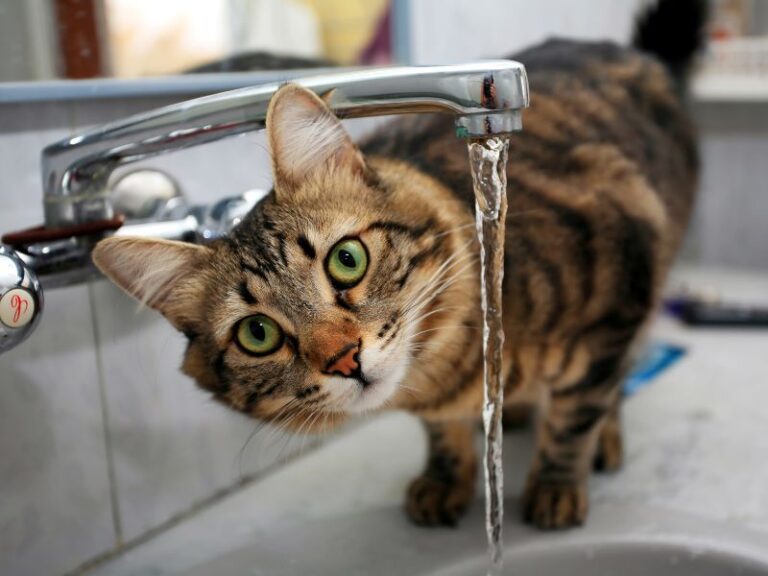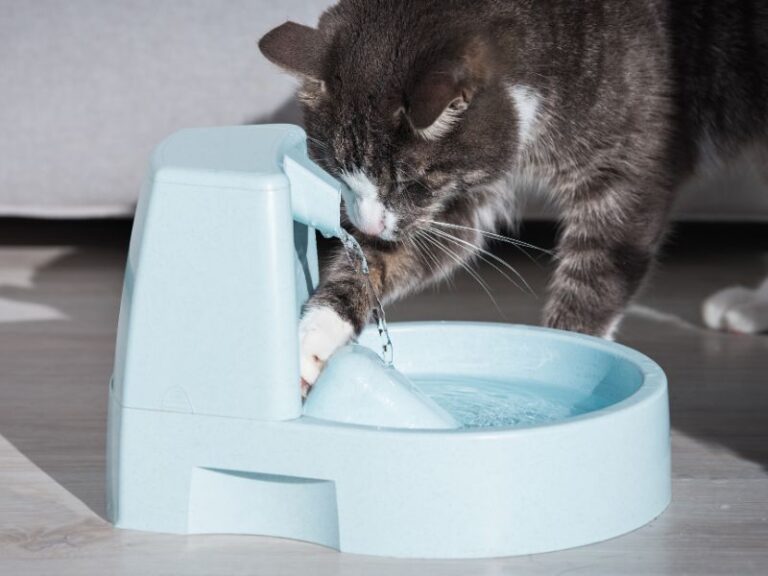Table of Contents
ToggleA clean litter box isn’t just a mundane chore; it’s a direct pathway to your cat’s contentment. Picture a serene, purring feline, completely at ease in its environment—this idyllic scene is closely intertwined with the state of their litter box. As devoted cat guardians, we understand that a clean litter box isn’t only about sanitation; it’s a gesture of love and care that directly impacts our cats’ well-being. In the following sections, we’ll delve into the art of maintaining a pristine litter box, exploring tips and strategies that elevate the quality of life for both you and your beloved feline companions.
The Significance of a Clean Litter Box
Cats epitome of elegance and grace. Their grooming rituals are almost an art form, a ballet of paws and tongues. This inherent need for cleanliness extends beyond their fur; it encompasses their environment as well. Understanding this inclination is the first step toward grasping the significance of a clean litter box.
The Dirty Truth: How an Unkempt Litter Box Affects Your Cat
- Behavioral Ripples: Cats are creatures of habit, and a soiled litter box disrupts their routines. Discover how a dirty box can lead to avoidance behavior, where your cat might shun their litter box altogether, seeking alternative spots that could be less than desirable.
- Stress and Anxiety: Cats are highly sensitive beings, and a messy litter box can contribute to their stress levels. Explore how an unclean environment might amplify your cat’s anxiety, leading to a range of behavioral changes that can impact their overall well-being.
- Health Hazards Lurking: Delve into the potential health risks a dirty litter box poses to your cat. From urinary tract issues to infections, the presence of waste can pave the way for a host of health problems. Learn how a proactive approach to cleanliness can be a preventive measure for your cat’s health.

Selecting the Perfect Litter Box
When it comes to selecting a litter box, it’s not just about aesthetics; it’s about creating a haven that aligns with your cat’s preferences and needs. Cats are, after all, individuals with unique personalities and quirks, and finding the perfect litter box is akin to creating a personalized retreat for them.
Unveiling the Dichotomy: Covered vs. Open Litter Boxes
Choosing between a covered or open litter box might seem like a trivial decision, but it carries weight in your cat’s world. Delve into the pros and cons of each option. Covered boxes provide privacy, shielding your cat from view and potential disturbances, but they can also trap odors and potentially make some cats feel confined. Open boxes offer a clear view of surroundings, preventing any feelings of vulnerability, but they might lack the privacy that certain cats crave.
Size, Accessibility, and Shared Spaces
- The Goldilocks Principle: Size matters when it comes to litter boxes. Explore why choosing the right size is pivotal for your cat’s comfort. Too small, and your cat might feel cramped; too large, and they might find it challenging to navigate. Learn how to strike the balance that ensures your cat can move comfortably within their designated space.
- The Accessibility Factor: Entry and exit ease is a fundamental consideration. Cats value convenience and may be deterred by a litter box with high walls or narrow openings. Understand how a litter box that offers easy access aligns with your cat’s natural instincts and contributes to a positive litter box experience.
- Multi-Cat Considerations: If your household is blessed with multiple cats, a crucial equation comes into play: the number of cats vs. the number of litter boxes. Cats can be territorial, and providing multiple litter boxes can prevent conflicts. Explore how this practice fosters an environment where each cat can claim their own territory and eliminates any sense of competition.

Daily Scooping: A Habit of Hygiene
Just as dawn follows night, so does the responsibility of daily scooping follow the presence of a litter box. It’s not just a chore; it’s a commitment to your cat’s well-being and a testament to your role as a vigilant guardian of cleanliness.
The Fragrant Art of Regularity
- Aromatic Acumen: Cats have an extraordinary sense of smell, one that guides their every interaction with the world around them. An unclean litter box not only offends human senses but can overwhelm your cat’s delicate olfactory perceptions. Discover how regular scooping is your secret weapon against odors, ensuring that your home remains a harmonious haven for both you and your feline companion.
- Comfort Unleashed: Imagine stepping into a tidy restroom versus one strewn with debris; the choice is clear. Cats, too, value a pristine environment for their daily rituals. A consistently scooped litter box isn’t just a convenience—it’s a gesture of respect that ensures your cat’s comfort as they carry out their natural instincts.
Incorporating Daily Scooping into Your Routine
Establishing a daily scooping routine need not be a daunting task. Here are some practical tips to seamlessly integrate this habit into your daily rhythm:
- Scheduled Sessions: Set designated times for scooping, ideally once a day. By integrating it into your routine, it becomes as habitual as your morning coffee or evening walk.
- Invest in the Right Tools: Equip yourself with a sturdy scoop designed for efficiency. A good scoop ensures that you can swiftly and effectively remove waste, making the process less of a chore.
- Bag It Up: Keep waste bags or liners handy to expedite waste disposal. Having all the essentials at arm’s reach ensures that scooping remains a hassle-free endeavor.
- Instant Gratification: Train yourself to associate scooping with an immediate reward, whether it’s a moment of quiet reflection or a quick treat for your dedication. This psychological connection transforms scooping from a task into a rewarding ritual.
As you embark on this daily journey of scooping, remember that it’s a tangible expression of your commitment to your cat’s comfort. By embracing this habit of hygiene, you create a space that nurtures not only their physical well-being but also the bond you share. So, let’s scoop up the moments that matter, one day at a time, and foster an environment that resonates with your cat’s natural desires.

The Deep Clean Routine: Weekly Maintenance
While daily scooping is the cornerstone of maintaining a clean litter box, there comes a time when a more thorough intervention is needed. Enter the weekly deep cleaning routine—a ritual that not only refreshes the environment but also resonates with your commitment to your cat’s well-being.
The Dance of Deep Cleaning: Steps Unveiled
- Emptiness Beckons: Begin by emptying the entire litter box. Dispose of the old litter, waste, and any debris that has accumulated. This act of clearing the slate lays the foundation for a pristine litter box sanctuary.
- A Soap Symphony: Wash the litter box with mild soap and water. Ensure thorough cleaning, reaching every corner and crevice. The goal is to eliminate any lingering odors or bacteria that might have taken root.
- Sunlit Serenity: Allow the litter box to dry completely in a sunlit spot. Sunlight is nature’s disinfectant, and this step ensures that your cat’s space is not only clean but also naturally sanitized.
- The Refill Ritual: Once the box is dry, replenish it with fresh litter. The amount should be sufficient to maintain a comfortable depth for your cat to dig and bury, satisfying their natural instincts.
Benefits Beyond Cleanliness: Why a Weekly Deep Clean Matters
Regular deep cleaning might seem like a demanding task, but the benefits it bestows are well worth the effort. By completely emptying and cleaning the litter box:
- You Erase All Traces: The thorough emptying eliminates any residual waste or odors, offering a fresh slate for your cat to return to their space without hesitation.
- Bacteria Bid Farewell: Bacteria and germs that can accumulate over time are eradicated, contributing to a healthier environment for both you and your cat.
- A Mental Reset: Cats are sensitive to their surroundings, and a clean litter box can enhance their mental well-being. A reset environment reduces stress and promotes a sense of security.
Deep Cleaning Demystified: Tips for an Effective Routine
Delving into a deep cleaning routine need not be overwhelming. Here are some tips to ensure a successful experience:
- Consistency is Key: Designate a specific day each week for deep cleaning. Consistency transforms it from a chore into a routine that’s second nature.
- Keep Supplies Handy: Create a cleaning kit with mild soap, a scrub brush, and cleaning cloths. Having everything within reach streamlines the process.
- Multitasking Magic: While the litter box dries, engage in a favorite activity. This multitasking approach makes the waiting time fly by.

Strategic Placement of the Litter Box
Imagine wandering through a bustling cityscape in search of a quiet oasis. Just as we seek solace in tranquil corners, our feline friends crave a similar escape within our homes. The strategic placement of a litter box isn’t just about convenience; it’s about creating a haven that resonates with your cat’s natural instincts and comforts.
The Essence of Location: Factors That Shape Choice
- A Quest for Privacy: Cats are creatures of solitude, often seeking private spots for their most intimate moments. The litter box is no exception. Delve into the significance of privacy, exploring how a secluded spot can elevate your cat’s sense of security and encourage consistent litter box use.
- The Serenity of Silence: Cats possess sensitive ears that detect the faintest of sounds. As you contemplate the litter box’s placement, consider the noise level of its surroundings. A quiet location shields your cat from startling noises, ensuring they can focus on their business without disruption.
- Accessible Accessibility: Cats value easy access, especially when nature calls. A litter box that’s too far from their usual haunts might discourage them from using it. Explore the importance of ensuring the litter box is conveniently located, minimizing the distance your cat needs to travel.
Mapping the Perfect Spot: Ideas for Litter Box Placement
- The Quiet Corner: Identify a quiet corner of your home, away from high-traffic areas. Whether it’s a spare room, a nook in the hallway, or a cozy corner in the living room, this quiet haven creates an environment where your cat can seek refuge and tend to their needs in peace.
- Multi-Level Convenience: For multi-level homes, consider placing litter boxes on each floor. This ensures that your cat doesn’t have to navigate stairs when nature calls, promoting consistent litter box usage and minimizing the potential for accidents.
- Room with a View: Cats are curious beings, often drawn to windows that offer a glimpse of the world beyond. Placing a litter box near a window provides entertainment and visual stimulation, making the litter box experience more engaging for your cat.
- Serene Solitude: Spare bathrooms, laundry rooms, or guest bedrooms can serve as ideal locations for a litter box. These spaces are often quieter and less frequented, giving your cat the privacy they crave while keeping the litter box discreetly tucked away.
Relevant >> Litter Training Kittens: How to train a cat to use the Litter Box

Health and Behavior: Monitoring Litter Box Habits
Within the realm of a litter box lies a realm of insights into your cat’s well-being. Beyond the clumps of waste and the routine scooping, there’s a story unfolding—a story of health and behavior that can guide you in safeguarding your cat’s happiness and longevity.
Decoding the Clues: Changes in Litter Box Habits
- A Shift in Routine: Cats are creatures of habit, and a sudden change in their litter box routine is a noteworthy signal. Explore how alterations in the frequency or timing of litter box visits can indicate potential health issues or discomfort.
- Altered Waste Patterns: The composition of waste speaks volumes. Be attuned to changes in consistency, color, or smell of urine and feces. Such shifts can hint at underlying health problems that need attention.
- Straining and Vocalizations: Notice if your cat exhibits signs of discomfort while using the litter box, such as straining or vocalizations. These behaviors could point to urinary tract issues or other ailments that require prompt intervention.
The Guardian’s Role: Paying Attention and Taking Action
- An Ounce of Prevention: Cats are adept at concealing discomfort, making it crucial for cat owners to be vigilant observers. Regularly monitoring litter box habits can catch issues early, when they are more manageable and less invasive to treat.
- \Attuning to Behavior: Beyond waste patterns, pay attention to your cat’s overall behavior around the litter box. Are they hesitant to enter? Are they excessively grooming their genital area? These behaviors could provide additional insights into potential health concerns.
When to Seek Professional Insight: The Role of the Veterinarian
The bond between a cat and their human companion is built on trust, and part of that trust is knowing when to seek help. If you notice significant changes in your cat’s litter box habits—especially if they persist—it’s time to involve a professional. Veterinarians possess the expertise to decipher these signals, conduct tests, and provide tailored guidance for your cat’s well-being.

Final Words
Our journey through the intricate landscape of cat care unveils a profound truth: a clean litter box isn’t just a mundane task, but a testament to our dedication as guardians. It’s a gateway into understanding our feline companions’ intrinsic need for cleanliness, privacy, and comfort. From the dance of daily scooping to the orchestration of a weekly deep clean, we’ve witnessed how a well-maintained litter box isn’t just a physical necessity, but an emotional connection. As we strategically position the litter box and decode our cats’ messages through their habits, we deepen our bond with them. In the silent sanctuary of the litter box, we’ve discovered a world of health insights and behavioral cues that guide our role as caretakers. Thus, each scoop and every choice becomes an affirmation of our commitment to their well-being and happiness. With the closing of this guide, we carry forward a greater understanding—a reminder that nurturing our cats through cleanliness isn’t just a chore, but a testament to the love and respect that define our relationship with our cherished companions.






